

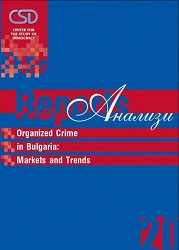
The report Organized Crime in Bulgaria: Markets and Trends summarizes the analyses carried out by the Center for the Study of Democracy throughout the last decade which have focused on specific aspects of organized crime in Bulgaria (contraband, the drug market, tax fraud, human trafficking, arms proliferation, etc.), the systemic spread of corruption, and the linkages between the two. The report presents the latest trends and manifestations (or market niches) of syndicate crime and its particularly damaging effects. It goes further to offer a historical review of the facts and available expertise in the area, and to draw conclusions about the origin, characteristics and developmental features of organized criminality in Bulgaria in the context of the transition to democracy.
More...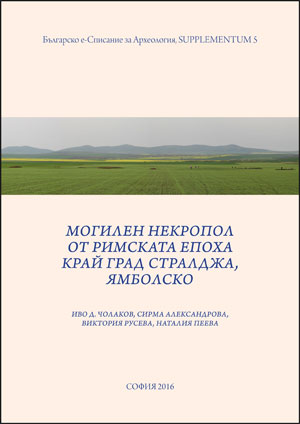
Keywords: Roman period; necropolis; cremation burial; inhumation burial; tumular cemetery.
The volume presents the results of the archaeological survey of a Roman age tumular necropolis in the administrative territory of the town of Straldzha, Yambol region. The investigation was carried out as a rescue excavation due to the construction of the “Trakia” highway. Five tumuli of the necropolis have been thoroughly researched. A total of thirty one graves have been discovered, of which nineteen are cremations and twelve are inhumations. Nineteen complexes related to commemoration practices have been surveyed. There are two horse burials. Eight of the studied inhumations are secondary, and one grave is from the Bronze age and predates the necropolis. The excavation of the necropolis has revealed the skeletal remains of thirty-four individuals, and for twenty-two of them age and sex have been determined. The entire ceramic material and all small finds discovered at the site have been investigated in detail. The date of the researched necropolis near Straldzha is based on the coins found and the various objects put as grave goods. The period of its initial heaping and use is the early 2nd until the first decades of the 3rd century.
More...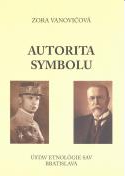
Keywords: Czechoslovakia; Tomáš Garrigue Masaryk; Rastislav Štefánik; Jan Masaryk;
The formation of symbols is a characteristic feature of human thought; symbols become part of the inherited cultural equipment to not only identify common groups and individual values, ideas and ideals, but also to somehow stabilize and update them. Out of many outstanding personalities influencing the joint state of Czechs and Slovaks, the oral tradition selected some, on the basis of specific criteria of folklore traditions, which were also affected by their official presentation. The field investigation of the collective narratives shows that the main criteria for their selection were folk character of the personality, its moral credit and its status of victim. In 1989, after the fall of communist regime, one could again freely and openly talk, reminisce, investigate and publish topics associated with personalities that were tabooed and doubted for more than forty years. Folklore studies in Slovakia turned its attention to the older folklore material collected in the period of ideological relaxation in the years 1967 - 1969 and complete it with further actual research. The exploration of this topic brought to folklore studies opportunities to address some methodological problems. In the past, the research of oral tradition was concentrated mainly on particular personalities and characters from the distant past which were transformed by tradition into a legend with only few realistic elements (for instance national and folk hero Jánošík). The research of folklore reflection of the 20th century personalities has provided the challenge to track the creation of collective symbols and identities and the change of their perception during the time. The real historical personalities of modern political and social life of the 20th century, reflected in ideas of diverse groups of rural and urban populations, connect the historical experience with myths, cult, local folklore as well as the positive and negative influences of contemporary interpretations of history. The national and religious antipathy and affinity are also interconnected within the region or locality. These are connected to several historical periods and facts: the First World War, the struggle of our nation for the own state, the relationship between the nations in the early days of the state and in its further development, then the Slovak state, the World War II, partisan movement during the Slovak National Uprising, the communist regime, the occupation by Soviet troops, the normalization, and finally the post-communist period and the dissolution of Czecho-Slovakia. The author in the individual chapters addresses a picture of prominent historical figures connected with the formation and existence of the Czechoslovak Republic: Milan Rastislav Štefánik, the first president Tomáš Garrigue Masaryk (1850 - 1937) and his son Jan Masaryk, foreign minister in the Czechoslovak government after World War II in oral prosaic tradition. Based on the research material obtained in Brezová pod Bradlom, Košariská and its vicinity, the author in the study The image of a hero in Slovak prosaic folklore (“Obraz hrdinu v slovenskom prozaickom folklore”) states that folk narratives of general M.R. Štefánik’s personality is necessary to interpret within its complicated historical and political context, including also the periods before and after M.R. Štefánik’s life. Folk narratives are constantly maintaining the continuity of his image, pointing out his importance for the present and future and his spiritual potential for the national community. The range of official and folk manifestations about him varies from romantic and pathetically emotional perception through real-factual (often unilaterally positively celebratory) to negativistic political discrediting. This is one significant sign of M. R. Štefánik’s myth, which shows its exceptionality in Slovak folklore. The part The elements of bios in the contemporary Slovak folklore (“Prvky biosu v súčasnom slovenskom folklore”) is based on the scheme of basic and classical bios of the biblical story of Christ’s life, the life of a Byzantine saint, one of the oldest and most popular genres of Byzantine literature, which as a prototype of canon biography (T.V. Popovová also analyses the oldest biographies preserved in Slovakia − ‘The life of Constantine (Cyril)’ and ‘The life of Method’. The genre of bios is further developed in three ways: 1) to remember the stories of important people, 2) the celebration of a hero, 3) the moralistic and psychological role. The study of a folklore cycle about M. R. Štefánik with elements of bios, shows that it incorporates more real and specific issues from historical period and the events concerned, the closer the topic gets to the present (as well as stories from life), but at the same time keeps the classic elements of folklore genres and themes in the tradition. The part titled The theme of death as a myth-creating element in the folklore cycle about M. R. Štefánik (“Motív smrti ako mýtotvorný prvok vo folklórnom cykle o M. R. Štefánikovi”) suggests that the mysterious circumstances surrounding death in general encourage curiosity, conjecture and conditions for spreading different possibilities for its explanations. The political myth-creating process that becomes folklore, of which the Štefánik’s folklore cycle undoubtedly is a part, includes not only the various political illusions, substantiating political attitudes, but also the archetype fate of how M. R. Štefánik was violently and mysteriously killed in a plane crash on 4th May, 1919 at Vajnory (there were reported at least six different explanations of his death). Finally the author pays attention to the process of interpreting his life within the folk tradition and the national idea, which embodies the hero, and his transmission to immortality. The part M.R. Štefánik in the oral tradition in Slovakia (“M. R. Štefánik v ústnej tradícii na Slovensku”) suggests that images of different folk heroic types are developed through the whole cycle of episodes about their character, activities, life and relationship to the neighbourhood. Thus the concrete personality is taken as a model characterising a particular locality or region, and under certain circumstances can grow into a national hero. The reflection of the personality of M. R. Štefánik in the oral tradition, points to differences in the perspectives of several generations, not only with the concern of turning him into a myth, but also in connection to the different historical experiences of the generations and impact of different political regimes. On the one hand, there are still memories of direct eyewitnesses, contemporaries and peers of M. R. Štefánik, on the other, the narrative of subsequent generations are more affected by journalism, official evaluation, reaction to the often contradictory information and experiences, and then also the reactions of the youngest generation, ideas and knowledge of children. The folk hero across national border (“T. G. Masaryk in Slovakia I.”) is devoted to folklore cycles of important personalities of the common history of Slovaks and Czechs. There is a folklore cycle concerning the life of the first Czechoslovak president T. G. Masaryk and his family at the both sides of the mutual border. In Slovakia, especially in his holiday destination in Topoľčianky (where he used to spend the summer at the castle with his family, welcoming the visits of friends, politicians, artists and eminent personalities from abroad), and also in Bystrička near Martin. These regular summer visits with his family date back to 1887, when he was still a professor at the University of Prague. After he was elected President, he spent several summers in Bystrička in a villa that was built by his daughter Alica in 1931. Here the folklore topics are devoted to their villa in Bystrička that they called ‘manor house’, relationship of the president and his children Alica and Jan to the people of Bystrička and Martin, the fate of Bystrička’s ‘manor house’ confiscated in 1952 (which includes the current, contemporary relations to the Masaryk tradition), the image of the SlovakCzech relations at the local level and the confrontation of the two presidents, T. G. Masaryk and Václav Havel, and their relationship to Slovakia. The comparative probe into the folk repertoire with the topic of T.G. Masaryk’s personality in the territory of the Czech Republic (municipality Nedašov, Nedašovská Lhota district Valašské Klobouky) on the Slovak-Moravian border highlighted some common features, but also differences to the Slovak view. The part Genius loci – genius personae: Topoľčianky. T. G. Masaryk in Slovakia II. (“Genius loci – genius personae: Topoľčianky. T. G. Masaryk na Slovensku II.”) points to the village Topoľčianky, still known for its historical role in the first half of the 20th century, when, regularly, for several months a year it used to be not only the resting place of the president T. G. Masaryk, his family and government officials and other important domestic and foreign guests, but also a center of management of the Czechoslovak state. It was one of the few sites where, at the time, political and diplomatic influence was concentrated, where the elements of the myth-creating image of the first president were formed, from where stories about the President’s relationship to the ordinary people and his cult were spread by printed media. It was also a place where artistic photos of his private life and Čapek’s book of conversations with him originated. For the village it was a period when it became known as the “Masaryk’s Topoľčianky” and carried the torch of good relations between Czechs and Slovaks and a flag of a joined state in favourable or unfavourable conditions of its political perception. The image of Jan Masaryk in oral tradition (“Obraz Jana Masaryka v ústnom podaní”), by selecting certain motifs of his life mainly consists of three layers, which correspond to certain episodes of bios mode (his life): childhood, youth, relationships with people, character traits, wisdom, death and his legacy into the future. They are intertwined with the published facts, with the memories of individuals and their ancestors, as well as various rumoured news disseminated to clarify the unexplained circumstances of his death. In the part titled The 90th anniversary of the death of General Milan Rastislav Štefánik (“K 90. výročiu smrti generála Milana Rastislava Štefánika”) the author recalls the celebration of this anniversary in Slovakia organised by ‘The association of Czechs and Slovaks’ in Basel (DOMOV, “HOME”) and the Swiss branch of the Society of Arts Sciences (SVU) on the grounds of the Slavonic seminary at University of Basel in June 2009. Here, the results of folkloristic research concerning the personality of M.R. Štefánik were presented. The relationship to the symbols in some way reflects the history of a nation or state and facilitates the continuity of the present with the past pointing at the same time to the future. These values and symbols have a strong authority even today, which confronts the disintegration of values and moral crisis in society, as well as the search for common pathways in the European history of two nations, the Czechs and the Slovaks.
More...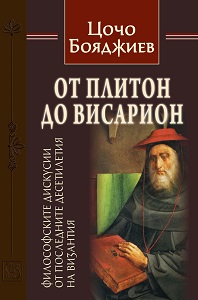
Keywords: Byzantium; philosophy; literature; philosophical; views; Byzantine; culture; 15th century; traditions; Middle Ages; research; book; books
The presented text constitutes the literary basis of my lecture given to the students of philosophy at Sofia University. Of course, the transcript only transmits schematically the actual content of the course. The living atmosphere of communicating with the audience remains unbearable. Stylistically, the text follows Étienne Gilson's recommendation to read the studied author with a pencil in hand. At the same time, he, in some way, stylized the discussed contraversion, ignoring the ecclesiastic, ideological, political, and other contexts of discussion. This is done for the sole purpose of demonstrating the philosophical substance as much as possible in the intellectual disturbances of the last decades of Byzantium. The hope is that such an "extract" will show how inherently inappropriate and misleading is the question often asked: "Is there such a thing as Byzantine philosophy?" For several years now, studies have confirmed the immanent philosophical character of Byzantine culture. This book is a modest attempt to add a few more arguments in this direction. - Tzotcho Boiadjiev
More...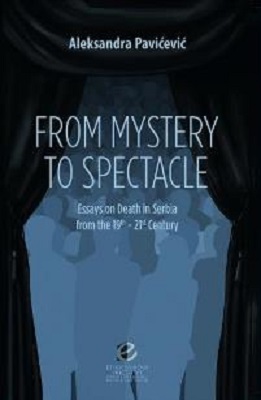
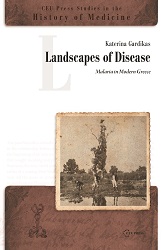
Keywords: Malaria;Greece
Malaria has existed in Greece since prehistoric times. Its prevalence fluctuated depending on climatic, socioeconomic and political changes. The book focuses on the factors that contributed to the spreading of the disease in the years between independent statehood in 1830 and the elimination of malaria in the 1970s.By the nineteenth century, Greece was the most malarious country in Europe and the one most heavily infected with its lethal form, falciparum malaria. Owing to pressures on the environment from economic development, agrarian colonization and heightened mobility, the situation became so serious that malaria became a routine part of everyday life for practically all Greek families, further exacerbated by wars. The country’s highly fragmented geography and its variable rainfall distribution created an environment that was ideal for sustaining and spreading of diseases, which, in turn, affected the tolerance of the population to malaria. In their struggle with physical suffering and death, the Greeks developed a culture of avid quinine consumption and were likewise eager to embrace the DDT spraying campaign of the immediate post WW II years, which, overall, had a positive demographic effect.
More...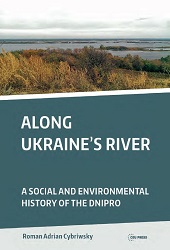
Keywords: Dnieper River; Ukraine; Environmental conditions; Social life and customs;
The River Dnipro (formerly better known by the Russian name of Dnieper) is intimately linked to the history and identity of Ukraine. Cybriwsky discusses the history of the river, from when it was formed and its many uses and modifications by human agencies from ancient times to the present.From key vantage points along the river’s course—its source in western Russia, through Belarus and Ukraine, to the Black Sea—interesting stories shed light on past and present life in Ukraine. Scenes set along the river from Russian and Ukrainian literature are evoked, as well as musical compositions and works of art. Topics include the legacy of the region’s cultural ancestors as the Kyivan Rus, the period of Cossack dominion, the epic battles for the river’s bridges in World War II, the building of dams and huge reservoirs by the Soviet Union, and the crisis of Chornobyl (Chernobyl). The author argues that the Dnipro and the farmlands along it are Ukraine’s chief natural resources, and that the country's future depends on putting both to good use.Written without academic pretence in an informal style with dashes of humor, Along Ukraine's River is illustrated with original line drawings, maps, and photographs.
More...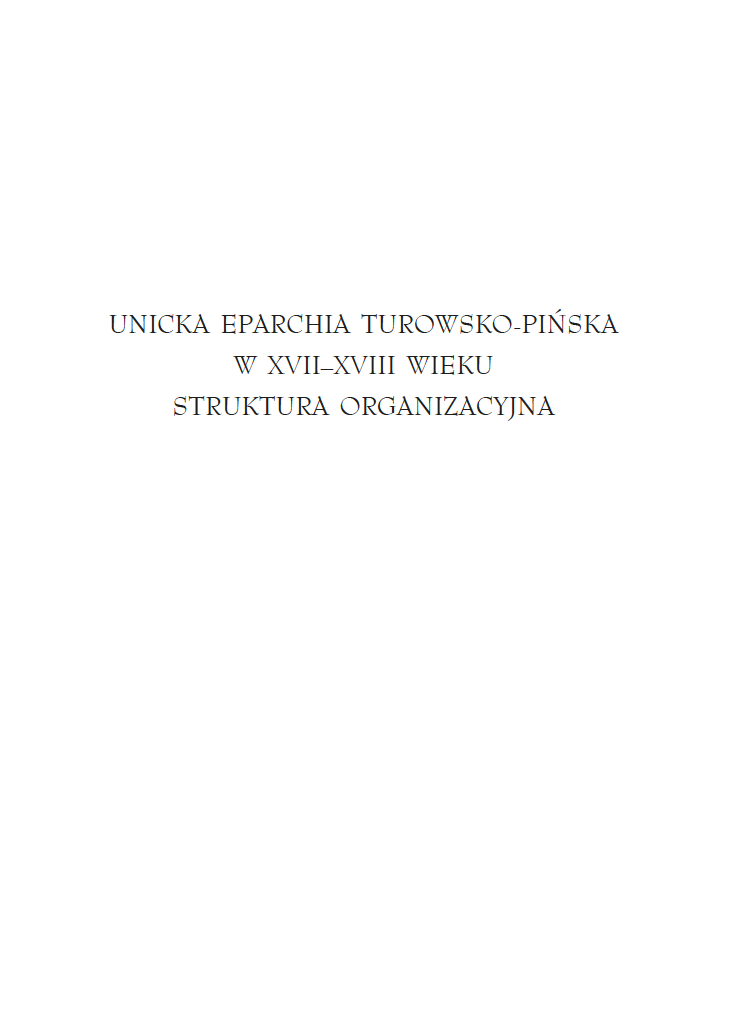
Keywords: Turow; Pinsk; unici
The author of the book examined the organizational structure of theUniate Eparchy of Turov and Pinsk in the seventeenth and eighteenth centuries.He based his works on extensive literature, and above all, on extensive sourcematerial. He based his conclusions on the material acquired in archives andlibraries in Poland and abroad: Vilnius, St. Petersburg, Minsk, Kiev, Lviv,Vatican City, Rome, London and Stockholm. The paper has been divided bythe author into 6 chapters and an introduction.
More...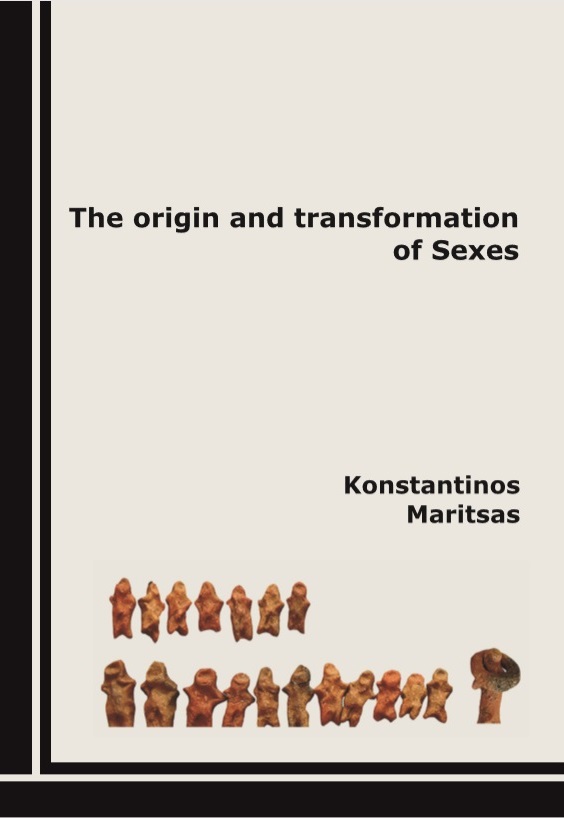
Keywords: natural selection; gender; sex; love; honosexuality; violence; aggression; civilization; reproduction; kiss; humor; laughter
I started writing this book with only one question – What is the meaning of sex? On this question there are thousands of books, but until the present day there has been no answer.Nature has created many ways for the reproduction of species. Some have disappeared along with the species, some still exist today. But in practice, species that reproduce bisexually have conquered the planet, with man as its chief representative. And not only this. According to Darwin, the existence of the sexes, male and female, is so important that it leads to “sexual selection”, which dominates even “natural selection”:
More...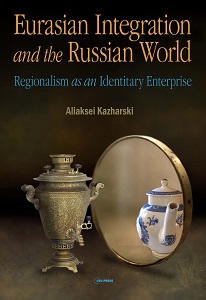
Keywords: Regionalism; Supranationalism; Geopolitics; Russia
This volume examines Russian discourses of regionalism as a source of identity construction practices for the country's political and intellectual establishment. The overall purpose of the monograph is to demonstrate that, contrary to some assumptions, the transition trajectory of post-Soviet Russia has not been towards a liberal democratic nation state that intended to emulate Western political and normative standards. Instead, its foreign policy discourses have been constructing Russia as a supranational community which transcends Russia's current legally established borders. The study undertakes a systematic and comprehensive survey of Russian official (authorities) and semi-official (establishment affiliated think tanks) discourse for a period of seven years between 2007 and 2013. This exercise demonstrates how Russia is being constructed as a supranational entity through its discourses of cultural and economic regionalism. These discourses associate closely with the political project of Eurasian economic integration and the “Russian world” and “Russian civilization” doctrines. Both ideologies, the geoeconomic and culturalist, have gained prominence in the post-Crimean environment. The analysis tracks down how these identitary concepts crystallized in Russia's foreign policies discourses beginning from Vladimir Putin's second term in power.
More...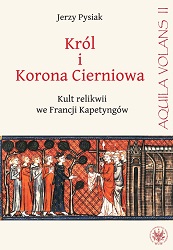
Keywords: Capetian dynasty; Crown of Thorns; medieval France; French literature of the 11th–13th century
The author portrays the relation between two problems of the medieval kingdom of France: the apocryphal 11th-century legend about Charlemagne bringing the Crown of Thorns to the kingdom of the Franks and its reception in 11th–13th century literature, and reconstructing the actual Capetian cult of relics. In the author’s opinion between the 11th and 13th century both phenomena of the spiritual culture of Capetian France were shaping the religious ideological foundations of the Capetian dynasty.
More...
Keywords: International trade and power; trade policy; Antiquity; Medieval Europe; Asia; Trade history; Translatlantic trade; Mercantilist wars; England; Holland; France; US Hegemony; Free Trade Zone; Military conflicts; Economic and political power;
The aim of this book is to examine the relationship between international trade and political power in an appropriate historical and political context. The term “international trade” designates the exchange of goods between (relatively) distant regions but primarily between territories which are controlled by different political entities. In general, this kind of trade always has important political implications. It is a form of contact between members of different political entities who are usually of different ethnicities, sometimes even belonging to different religious groups or cultural regions. From the viewpoint of these different political entities (i.e. states), the exchange of goods (here understood as international trade) has always presented a mix of opportunities and risks, both political and economic.
More...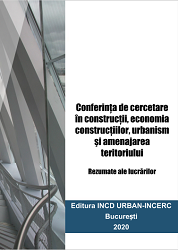
Keywords: URBAN-INCERC; conferinţă; conference; urbanism; amenajarea teritoriului; spatial planning; construcţii; buildings; constructions;
Includes abstracts of the papers presented in the research conference on constructions, economy of buildings, architecture, urban and territorial development.
More...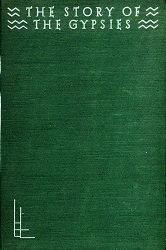
Keywords: Gypsies; Roma; Egyptians; Sinti; Travellers;
I am attempting to unravel the story of a people whose vocabulary lacks two words — ‘duty’ and ‘possession.’ For hundreds of years the Gypsies have lived beside us —in the Orient and in the Occident, in Egypt as well as in England, in Syria and in France, in Italy, in Germany, in Turkey, on the frozen plains of Russia, in the Pusta of Hungary, on the barren rocky mountains and in the fertile valleys of Wallachia, in Australia and in the Americas — and we neither know nor understand them. What we know about them compared with what they know about us is like but a drop of water in the vast ocean. They do not live as we do because they do not consider our manner of living good enough for them, because they are not like the vintners who never get ‘half as good as the things they sell.’ (the author’s introduction)
More...
Keywords: Antiquity; society of Archaic and Classical Greece; ancient communities
The post-conference publication, which comprises articles on different aspects of state and society in Babylonia, Persia, Archaic and Classical Greece, Roman Republic and Roman Empire, Byzantium. The authors – historians, philologists and archaeologists – demonstrate the current state of knowledge and new perspectives in their fields of research by confronting various methods and research approaches.
More...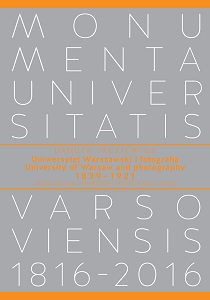
Keywords: Polish photographers; University of Warsaw 200 aniversary; history of photography
The bilingual (Polish-English) and richly illustrated book is an attempt to show the references between the history of University of Warsaw and the development of photography – a crucial invention for the new visual civilization. The book covers the period from 1839, when the invention of daguerreotype was announced in France and when the first daguerreotypes were made in Poland, to 1921, when the situation of the University, reactivated during the World War I, was finally stabilized after the Polish-Soviet War. On the one hand the book presents the buildings of the University and the oldest photos of the people who created the history of the institution, on the other hand – it contains the reflection on the origins of photography in Warsaw and on the participation of the scientific milieu in its development. Which is worth noticing, at the beginning of the 1850s the scientists of the University of Warsaw already regarded photography as a useful research tool. The book is divided into two parts. The comprehensive essay illustrated with several dozens of figures is devoted to the origins of the photography and to its connection with the University of Warsaw. In the album more than 100 photographs (with the extensive commentaries) present the portraits of the professors and the students, the buildings and the important events related to the University. The publication is licensed under the Creative Commons Attribution-Share Alike 3.0 Poland license (CC BY 3.0 PL) (full license available at: http://creativecommons.org/licenses/by/3.0/pl/legalcode).
More...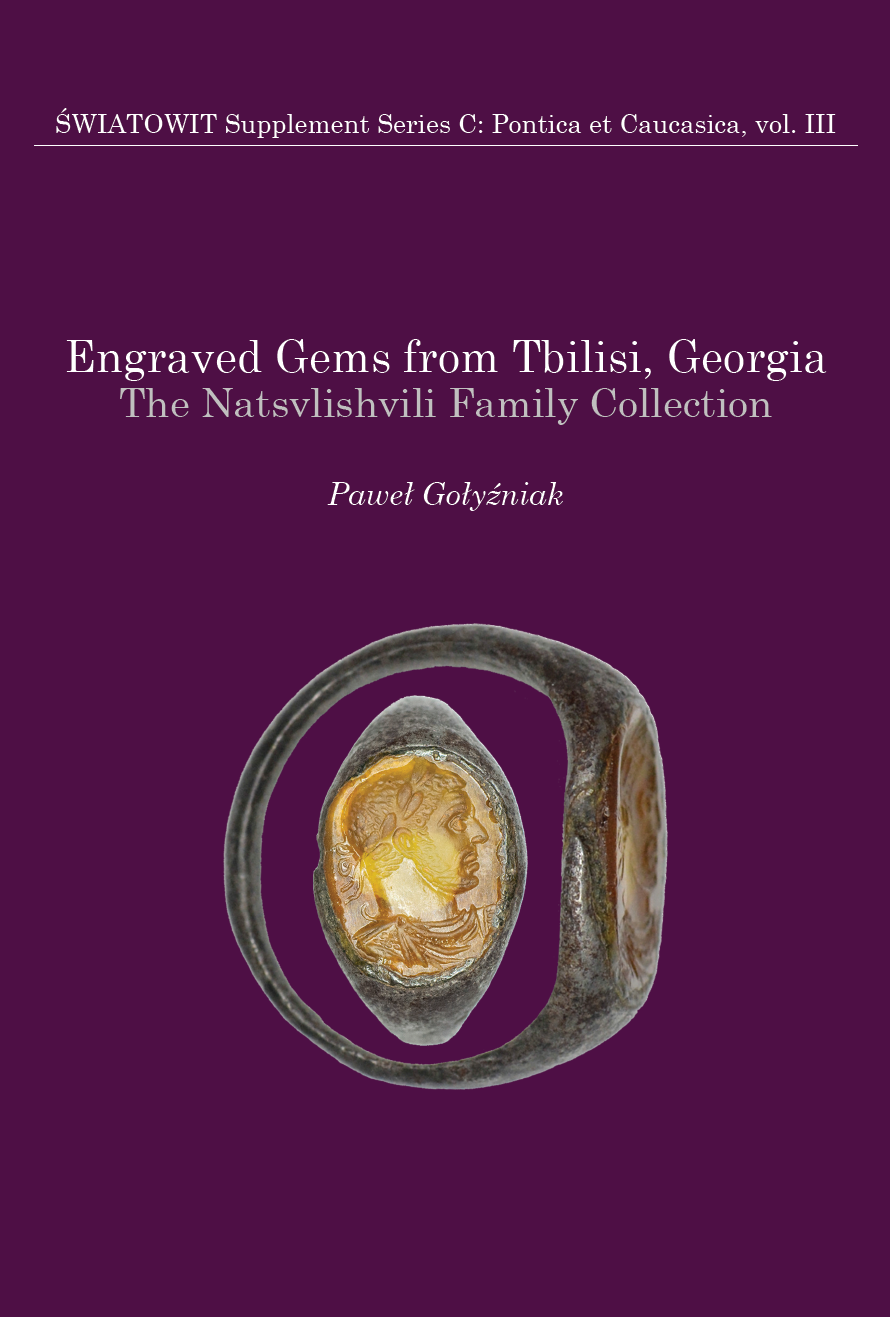
Keywords: Natsvlishvili Family collection; Tbilisi; products of glyptics; Georgia
This book presents nearly 200 objects of glyptic art from the Natsvlishvili Family collection, Tbilisi, Georgia. Their cultural, geographical and chronological diversity is considerable starting from the Near Eastern cylinder and stamp seals as well as amulets, through the Egyptian scarabs, Greek and Roman intaglios and cameos, the post-classical gems and contemporary forgeries. This eclectic collection was a base for an essay on the subject of how to differentiate genuine ancient engraved gems from their modern copies, pastiches and forgeries. That essay is an introduction to the detailed analysis of the objects discussed in the catalogue section. Overall, it is confirmed that the cabinet contains products of the local glyptics as well as the imported ones to the territory of Georgia from all over the world through ages. The book also gives a valuable insight into the role of Tbilisi as a hub for exchange and trade in antiquities and works of art in the second half of the 19th and 20th century.
More...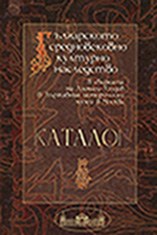
Keywords: Bulgarian medieval cultural heritage; Alexei Khludov; manuscripts; description.
The tragic fate of the Bulgarian medieval cultural heritage is well known to the specialists. Less is known, however, about it by the Bulgarian and foreign cultured public. It is an important part of the all-round historical path of the Bulgarian people and not only does it deserve a careful, thorough and detailed study but every Bulgarian should be familiar with it. As all over the world, the monuments of Bulgarian culture of the Middle Ages have gone through the natural changes occurring in the course of time. Besides that, they have been destroyed and deformed during the numerous wars, foreign invasions and armed conflicts in the territories inhabited by the Bulgarian nationality after the formation of the Bulgarian State in 681. The written heritage of the Bulgarians from the Middle Ages is no exception in this respect. Certain specific peculiarities exist, however, in the fate of the Bulgarian medieval book. In the first place, because it was easy to carry, already in the Middle Ages in a great variety of circumstances it sometimes left the original places where it had been created, used and preserved, it travelled together with its owners along roads which have often remained unknown to us to the present day and finally settled outside the Bulgarian ethnic territories. This phenomenon is well known also from the history of medieval manuscripts all over Europe. As regards the Bulgarian medieval codices, it had certain important specific cunsequences, particularly during the periods of the 11th and 14th–16th centuries. It was precisely then that the Bulgarian literature and Bulgarian writing of the 9th–10th and 14th c. as a whole had a marked impact on the emergence and development of the Old Russian written culture of the 11th and 15th–16th centuries and on that of Wallachia and Moldavia of the 14th, 15th and 16th centuries. During those periods in Ancient Russia, in Wallachia and Moldavia became widespread works of the Bulgarian medieval literature, whilst in Wallachia and Moldavia even the Old Bulgarian language of SS Gyril and Methodius was used in its Middle Bulgarian form as official state language from their establishment in the 14th c. up to the 17th c. In these processes an essential role was indubitably played also by the transfer of handwritten books from the Bulgarian cultural centres after Bulgaria's fall under Byzantine rule in the late 10th c. – early 11th c. and under Turkish domination in 1393–1396. The moving out of medieval manuscripts from the territories inhabited by Bulgarians, in many cases prompted by the concern of their owners to preserve them from destruction, reached its peak in the 19th c. On an extremely large scale it began in the 30s of the century and in general ended in the late 70s although cases are known when manuscripts were exported from the Bulgarian lands even up to the beginning of the 20th c. In point of fact within a mere 400-50 years foreign travelling collectors who visited the lands inhabited by orthodox Christians in the Turkish Empire and who included many learned Slavicists, mainly from Russsia, took away large amounts of manuscripts connected with Bulgaria's cultural history. At present we have at our disposal information that in certain cases these manuscripts were given as presents by their owners who were chiefly monastic libraries; in other cases it is known that they were sold owing to the need for money and to not being aware of their value; we know that sometimes they were taken to be studied, with the promise to be returned. In the majority of cases they were taken away without any permission, and there were quite many manuscripts from which in the most barbarous way were torn separate leaves, requiring considerable effort on the part of the present scholars to be identified. In this manner was caused the dispersal of the Bulgarian medieval written heritage all over Europe, the main part of the removed manuscripts concentrating in Russian collectors. Moreover, so far science has established that actually the most valuable written monuments of the Bulgarian literature of the Middle Ages preserved now in their largest part are outside Bulgaria's boundaries. Fortunately as early as in the second half of the 19th c. part of the Slavonic medieval manuscripts collected in the territory of the Turkish Empire began to enter public depositories and to this day this process has been thoroughly completed. This considerably facilitates the study of the medieval written heritage connected with Bulgarian culture and preserved now abroad. Although initiated in the 19th c., this study has not been completed yet. It should be pointed out forthwith that it will hardly be completed in the near future. Notwithstanding the existence of enormous scientific interest in the monuments of Bulgarian medieval culture kept outside Bulgaria from the moment of their discovery to our days, researchers in principle direct their efforts to individual monuments or their individual peculiarities and extremely seldom – to the comprehensive presentation of all monuments of the Bulgarian cultural heritage in the separate collections historically formed and preserved in the contemporary depositories. In order to complete as soon as possible the process of collecting all pieces of written evidence about the development of Bulgarian literature from the Middle Ages and scholars to focus their efforts solely on its study, it is high time to proceed towards a purposeful and consistent cataloguing of all foreign collections.existing at present, of medieval manuscripts in which there is evidence of Bulgaria's medieval culture and that in many cases have remained completely unknown so far. In this respect particular attention need Russia's depositories keeping several hundred thousands of Slavonic medieval manuscripts, a considerable part of which contain monuments of the Bulgarian medieval culture. One of the richest among them is Russia's largest museum: the State Historical Museum in Moscow. One of its collections richest in monuments of Bulgarian culture is the collection of the big Moscow merchant Alexei Khludov (1818–March 22, 1882). What is more, this collection is one of the richest in the world in monuments connected with Bulgaria's written culture of the Middle Ages. Although it has been known to science since 1872 when the eminent Russian scholar Andrei Popov published the first detailed inventory of more than half of the manuscripts found in it (in 1875 he added to it the description of another 68 manuscripts) though some of the Bulgarian monuments had been researched several times or even published in full (like for instance the famous octoich of Strumica of the first half of the 13th c., the so-called Khludov or Lobkovski Prophetologion of the late 13th – early 14th c., the so-called Karpinian Gospel of the 13th c. and the Karpiniane Apostole of the early 14th c.), so far all the time in Alexei Khludov's collection unknown proofs of the Bulgarian medieval written culture continue to be discovered. It needs, therefore, not only new partial studies but in the first place – an all-round cataloguing of all Bulgarian monuments in it which should open the way for new thorough researches and show to wide circles of the Bulgarian public the necessity for carrying out such work on all the collections, kept abroad, which contain materials connected with Bulgarian medieval culture. The aim of this catalogue, therefore, is to describe briefly in compliance with the level of contemporary science the particularities of all the manuscripts of the Khiudov Collection in the State Historical Museum in Moscow that are in some way connected with the Bulgarian written heritage of the Middle Ages, also indicating all copies of original works of Bulgaria's medieval literature. The original selection of the manuscripts was carried out on the basis of the existing scientific literature on them, and their final selection was made after direct work by the authors of the catalogue in the Manuscript Department of the Museum. Thus of the 524 medieval manuscripts extant now in the collection had been chosen 134 manuscripts of Bulgarian, Serbian, Wallachian-Moldavian and Russian origin from the 13th to the 19th c. which were researched in Moscow with a view to preparing the present catalogue. Of them in the book are incorporated 98 Bulgarian, Serbian, Wallachian-Moldavian and Russian manuscripts of the same period. In the first place in the catalogue are presented the manuscripts where the Middle Bulgarian orthography was used, irrespective of where they had emerged, since the Wallachian-Moldavian codices, Middle Bulgarian as regards orthography, most accurately reflected the orthographical reform of Patriarch Euthymius of Turnovo. Besides that are included all Serbian and Russian manuscripts with respect to origin or orthography and which contain texts from works by Bulgarian medieval writers, parts of such works or direct references to them, as well as memories of Bulgarian saints or saints specially held in reverence by the Bulgarians. In the catalogue are embodied also Serbian manuscripts as regards orthography which do not contain Bulgarian works or Bulgarian memories but about which it may be assumed to have been written in the Southwestern Bulgarian lands after 1282 when they were included in the boundaries of the Serbian State and the Serbian orthography began to be used in them or about which there are data that they were used for a long time in these regions. The arrangement of the manuscripts and the principles of their description are based on the contemporary Bulgarian archaeographic practice and conform to the composition and features of the codices included in the catalogue. The material is arranged in three big sections: Biblical Books; Liturgical Books; Works of Byzantine and Old Bulgarian Writers. Each description contains several elements: 1. Number according to the present catalogue. 2. Signature in A. Klhudov's collection under which the manuscript is kept at present. 3. Title and dating. 4. Number of sheets, format, condition of the original pagination of manuscript and of the entirety of the inner book. 5. The material on which the book is written. 6. Type and dating of the binding. 7. Writing and presence of more than one handwriting in the manuscript. 8. Decoration. 9. Contents. 10. Notes. 11. Orthography. 12. Data on the history of the manuscripts after their removal from the places where they had been kept up to the 19th c. 13. Literature. In the work on the catalogue we were helped by many persons and institutions to whom we owe our sincere gratitude. With learned advice of and particular use to us besides L. Mavrodinova and H. Miklas, direct participants in the work on the project, were also Kl. Ivanova, L. M. Kostyukhina, G. Popov, R. Pavlova, G. Petkov and El. Velkovska to whom we express our profound gratitude. We sincerely thank the associates of the Scientific Archives of the Bulgarian Academy of Sciences, of the Archaeographic Commissionm at the "SS Cyril and Methodius" National Library and the Section on the History of the Bulgarian Language at the Bulgarian Language Institute of the Bulgarian Academy of Sciences who helped us by placing at our disposal for use their material from the A. Khludov Collection. We feel it necessary to express our gratitude to the State Historical Museum in Moscow that allowed us to prepare the catalogue and assisted us in the work on it, especially to its General Director Mr Alexander Shkurko, his deputy Mrs Tamara Igumnova, to the Head of the Manuscript Department Mrs Elena Serebryakova and to all members of the staff of the Department. The preparation and publication of the catalogue would have been impossible without the financial assistance of the PHARE Programme of the European Union. The catalogue was drawn up and published with money under the project "Arts Development Fund of the PHARE Culture Programme" after a competition by decision of the Ministry of Culture of the Republic of Bulgaria. We are greatly indebted to all who correctly appreciated the importance of the project and provided us with funds, including for direct work with the manuscripts at the State Historical Museum and for microfilming part of the material, without which the good-quality production of the catalogue would not have been possible. We are also grateful to the British Council, entrusted with the management of the Arts Development Fund, particularly to Mr Peter Tchesnovsky who all the time rendered us invaluable assistance and whom we consulted during all the stages of the work on the project in connection with drawing up the necessary administrative documentation. Now that the catalogue has already been completed, it may be said that the full elucidation of the material linked to the Bulgarian medieval cultural heritage from A. Khludov's Collection has fully justified our original expectations. In the process of work were introduced a number of specifications and corrections in the information hitherto known about the manuscripts (they are indicated in the concrete descriptions). The authors of the catalogue have traced scores of unknown copies of works of Bulgaria's medieval literature of the 9th–10th c., indicated in the respective descriptions: e.g. two 14th century copies of the Canon of St. Dimitrius of Salonika by the Slav Enlightener Methodius, scores of 14th and 16th c. copies of works of St. Clement of Ohrid (sermons and hymnographic works), 14th century copy of the Service of St. Cyril Philosopher, several 14th c. copies of anonymous Bulgarian hympnographic works of the 9th and 10th c., numerous memories of SS Cyril and Methodius, St. John of Rila, St. Petka of Epivat, St. Ilarion of Muglen, St. Joachim of Ossogovo, St. loan of Polivot in manuscripts from the 14th to the 16th c., etc. What is worth noting is that in her work on the octoichs M. Yovcheva discovered even unknown hymnographic works of St. Clement of Ohrid in 13th and 14th c. manuscripts, some of which contain in acrostic the name of the author and which are reported for the first time in science in this catalogue. Thus the catalogue, I hope, is of considerable scientific value and opens new vistas for the study of the written heritage of the Bulgaria people in the Middle Ages. Taking into consideration also the hitherto known texts of works of Old Bulgarian literature which are in the manuscripts of Khludov's Collection – from the Prologue to the Gospel by St. Constantine-Cyril Philosopher, the numerous copies of the eulogies and edifying sermons of St. Clement of Ohrid and Peter Ghernorizets, the hymnographic works of St. Clement of Ohrid, Constantine of Preslav and St. Naum of Ohrid, the service of St. Cyril Philosopher, works of John Exarch of Bulgaria, the life of St. Antony the Great of Atanassius of Alexandria translated by Joan Presbyter, the Story of the Tree of the Gross by Priest Jeremy, the Sermon of Priest Cosma against the Bogomils, the extended lifes of Bulgarian saints of the 13th c., the life and service of Metropolitan Peter by Cyprian Camblak, the service of St. George Novi of Sofia, among which are found works known to this day to science only thanks to their only copy, kept in A. Khludov' s Collection (like the Second Service of St. Methodius, the work of his anonymous disciple, the Bulgarian apocryphal chronicle of the 11th c., the Chronological Story of the translation of the relics of St. Petka of Turnovo of the 13th c.), it is clear of what enormous value for the study of the entire Bulgarian medieval literature is this collection. From its contents, revealed for the first time in full in the present catalogue, it becomes evident that it is a remarkable compendium for the study of Old Bulgarian literature, particularly of the period of the Golden Century (late 9th – early 10th c.), when Bulgaria played a leading role in the development of Christian culture among the Slav peoples in the region of Southeastern Europe. It is our hope that as from now on scholars will be able calmly to concentrate their efforts on analyzing the priceless monuments revelled in the catalogue and connected with the Bulgarian cultural heritage from the manuscripts in A. Khludov's Collection. It is also our hope that this catalogue will give impetus to and be a model for the preparation of similar descriptions of all Bulgarian written monuments from the Middle Ages, scattered at present in foreign book depositories. This is of paramount importance with a view to the completion of a process which has taken an excessively long time for tracing all hitherto preserved testimonis of the Bulgarian medieval cultural heritage and no doubt a topical task of contemporary science.
More...
Keywords: contemporary woman; social and cultural changes
Rozpatrywanie zmian jakim ulegały i ulegają role społeczne podejmowane przez kobiety na przestrzeni czasu stanowi istotny społecznie postulat badawczy. Proponowany zbiór tekstów opatrzony tytułem Współczesna kobieta – szkice do portretu na tle przemian społeczno-kulturowych nie jest kolejnym opisem sytuacji kobiety we współczesnym świecie skupionym na jednym z wymiarów jej funkcjonowania. Zamiarem naszym jest raczej próba ukazania zmienności kobiety na tle zmienności świata i odwrotnie z szerokiej perspektywy aktualnych dziś różnych problemów społecznych. Znajdują się tu teksty odwołujące się zarówno do przeszłości, do teraźniejszości opierającej się na tym co przeszłe oraz do przyszłości, która z teraźniejszości z kolei wyrasta. Celem zaproponowania takiej formuły przedkładanej książki jest bowiem jak najszersze ukazanie złożoności sytuacji kobiety w świecie współczesnym, nierozerwalnie związanej z wczoraj i jutro. W publikacji zawarto teksty stanowiące z jednej strony rekonstrukcję dotychczasowych spojrzeń na prezentowaną problematykę, z drugiej zaś te mające charakter empiryczny, prezentujące wyniki badań własnych autorów. Wyrażamy nadzieję, iż publikacja ta dla każdego czytelnika stanowić będzie bodziec do refleksji nad sytuacją współczesnej kobiety oraz zachęci do podejmowania kolejnych badań w tym niewyczerpanym temacie.
More...